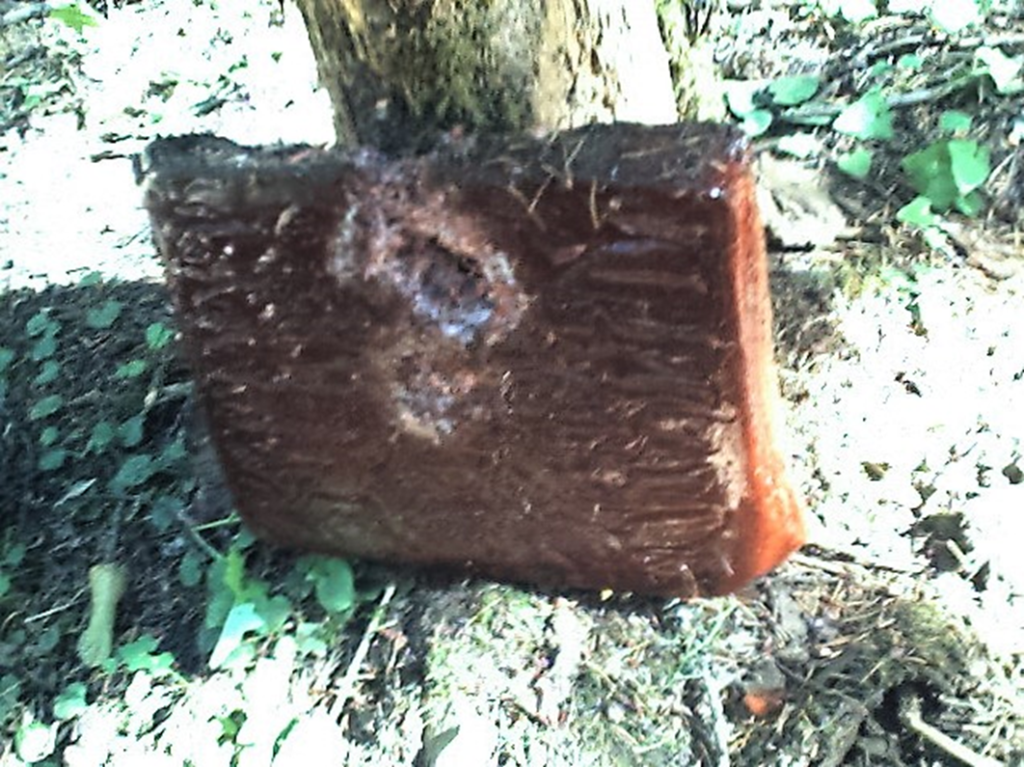
I learned this today. Pykrete is a frozen material made of 14% sawdust and 86% water. It is as strong as concrete.
Pykrete was put forward during World War II by Geoffrey Pike, who was the head of Project Habakkuk, an idea to use pykrete to build a floating aircraft carrier. The material was like concrete, so the research team added his name “Pike” to “crete” and ended up with “pykrete”. Presumably, they changed the “i” to a “y” to make it look more Greek.
Geoffrey Pike put forward the idea of pykrete, but it was suggested to him by a chemist called Herman Mark. Mark was Austrian and he fled when the Nazis took over Austria. He fled to America and joined the Polytechnic Institute of Brooklyn. Mark worked in polymer science, and he knew that plastics were brittle when pure, but they could be made stronger if fibers such as cellulose were mixed into them. This was the same as the way concrete could be strengthened when steel wires were mixed into it.
As an experiment, Mark and his assistant stirred wood pulp into water and froze it. The wood pulp was cellulose, and Mark wanted to see what happened. The addition of the wood pulp drastically strengthened the ice.
Max Perutz, another chemist who had fled Germany, took up this research and worked with Geoffrey Pike.
Geoffrey Pike took the idea of pykrete to Churchill himself and managed to persuade him to let them perform tests. They used a meat freezer in London and realized that water with 4% wood pulp would stop a bullet that would just shatter pure ice.
Pike’s idea was to make a floating island of pykrete that could be used to launch aircraft. His idea gained some traction and he took his pykrete to Canada to test it. He built a boat 18 m by 9 m that weighed 1000 tons. It took 8 men 14 days to build it. The powers that be soon realized that it was going to cost far more to make it than Pike had originally thought. Also, the war had turned and the huge amount of resources that were necessary could be used more effectively.
After the war, Geoffrey Pike continued as an inventor and a campaigner for causes, such as stopping the death penalty and support of UNICEF. In 1948, he shaved his beard and swallowed a bottle of sleeping pills. Nobody seems to know why.
Pykrete has both strengths and weaknesses. Here are the strengths.
The addition of 14% wood pulp to the water changes the thermal conductivity of the ice, meaning it takes longer to melt and is relatively stable at higher temperatures. It still melts, it just takes longer to melt than pure ice.
Pykrete has a crush resistance of 7.584 Megapascals. Pure ice has 3.447 and concrete has 17.240. It has a tensile strength of 4.826 MPa. Ice has 1.103 and concrete 1.724. That means a 25 mm column of pykrete would be strong enough to support the weight of a car.
If pykrete breaks, it can be repaired anywhere with sea water, so long as it is kept cold enough. Also, it can be machined like wood and cast into shapes like metal.
Some weaknesses of pykrete.
Because it is frozen, it has to be kept at or below freezing. It melts more slowly than ice, but it does still melt. It also expands when it freezes. Something that needs to be compensated for if used as a building material.
Pykrete will sag under its own weight unless it is kept at below -16℃. That severely limits its applications to places that are always this cold. It does this because of plastic flow. This is why glaciers move. With Geoffrey Pike’s pykrete aircraft carrier idea, it would have meant the pykrete having to be insulated and the installation of a refrigeration plant and cooling ducts.
It was not practical as a building material for ships during the war, but it does have uses. It is sometimes used on ice roads to help support more weight. Ice domes have been constructed in a number of countries using pykrete. The pykrete is used at the base of the dome to bear the weight and the pressure of the rest of the dome. MythBusters also built a boat out of pykrete. However, they discovered that by using sheets of newspaper instead of wood pulp, they were able to make a far stronger form of pykrete, which they called super pykrete.
So, pykrete is a very cool idea and the addition of 14% wood pulp to the wood makes it far stronger. However, it is not really practical as a building material. And this is what I learned today.
Photo By CyranoDeWikipedia, CC BY-SA 3.0, https://commons.wikimedia.org/w/index.php?curid=1924359
Sources
https://en.wikipedia.org/wiki/Pykrete
http://www.structural-ice.com/dome.html
https://www.bbc.co.uk/bang/handson/pykrete.shtml
https://www.chemistryworld.com/podcasts/pykrete/3007891.article
https://doaj.org/article/2b54aa1665824e1eb4aa1048a3e84abb
https://en.wikipedia.org/wiki/Max_Perutz
https://en.wikipedia.org/wiki/Herman_Francis_Mark
https://en.wikipedia.org/wiki/Geoffrey_Pyke
